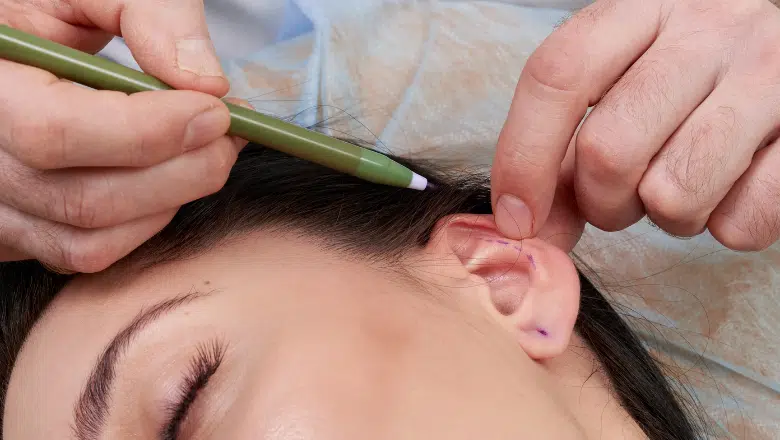When it comes to physical features, our ears play a significant role, much like our noses and eyes, showcasing a diverse array of shapes and sizes. This diversity, while a testament to human uniqueness, can sometimes be a source of discomfort for individuals who feel their ears don’t complement their overall appearance. Whether it’s due to their prominence, size, or shape, dissatisfaction with one’s ears can lead to a desire for change, seeking solutions that can enhance facial harmony and self-confidence.
Enter the world of otoplasty, a specialised surgical procedure designed to address such concerns. Otoplasty offers a transformative solution for those looking to alter the appearance of their ears. Whether it’s pinning back ears that stand out too much, reducing the size of ears that feel too large, or correcting congenital or injury-induced deformities, otoplasty stands as a beacon of hope. It’s not merely about altering one’s ears; it’s about bringing balance and proportion to the face, ensuring that each feature complements the other, thereby enhancing overall facial aesthetics.
RELATED: Achieving Symmetry and Confidence: Insights into Ear Pinning
At the Centre for Surgery, we take pride in our dedicated team of ear surgery specialists, each bringing a wealth of expertise and a gentle touch to the process. We are committed to providing personalised care because each individual’s needs and aspirations are unique. Our specialists deeply understand your specific concerns and goals, recommending the most effective techniques tailored to you. Our aim is not just to alter the appearance of your ears but to uplift your confidence, ensuring that the reflection in the mirror brings joy and self-assurance.
Different Types of Ear Shapes
The human ear, a remarkable feature of our anatomy, exhibits an incredible variety of shapes and configurations, contributing to the uniqueness of each individual’s appearance. This diversity is not limited to the ear alone but extends to the earlobe, with each aspect capable of displaying myriad forms. It’s fascinating that these variations are not mutually exclusive; a person can have a combination of characteristics, such as a free earlobe with a pointed ear shape or a protruding ear coupled with a narrow and attached earlobe.
Understanding the common ear and earlobe shapes enhances our appreciation for the intricate details that define human beauty and identity. Here’s an exploration of some prevalent ear shapes and earlobe types:














